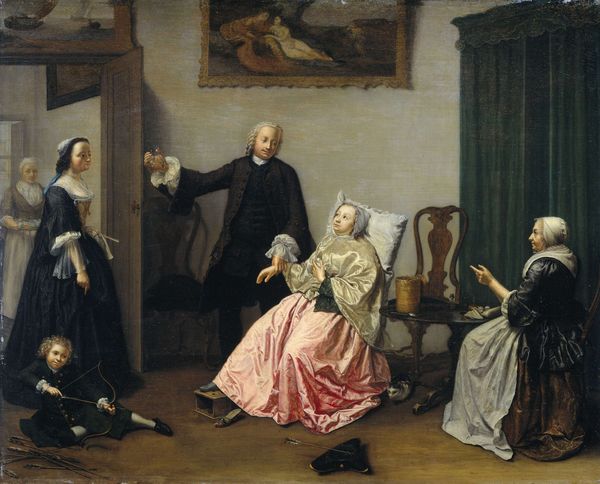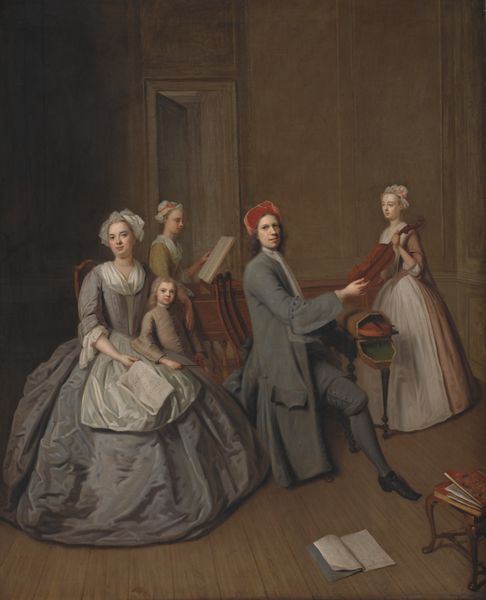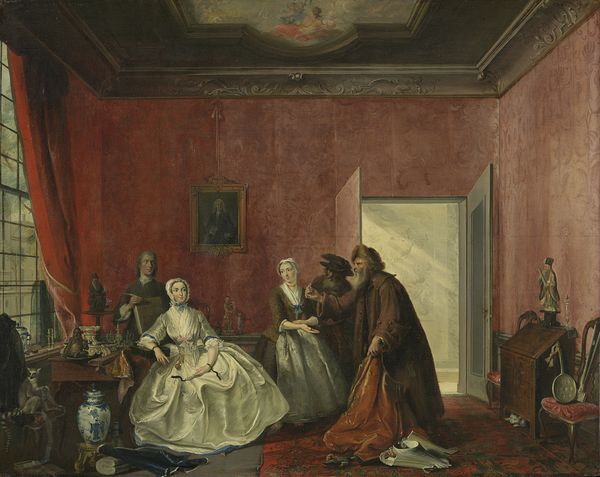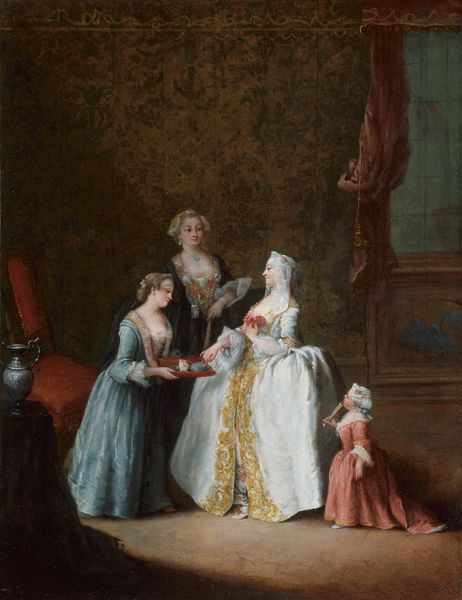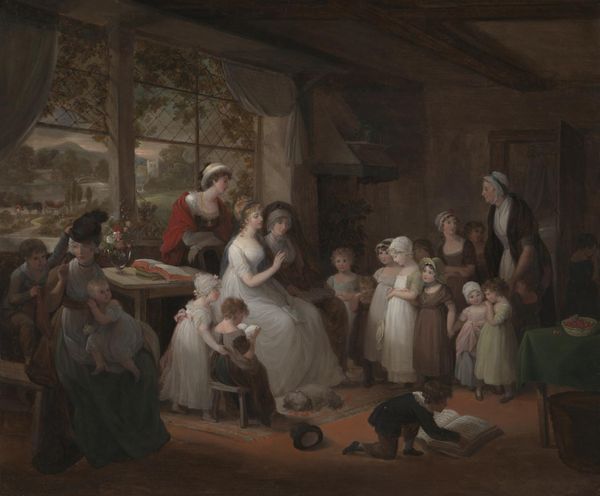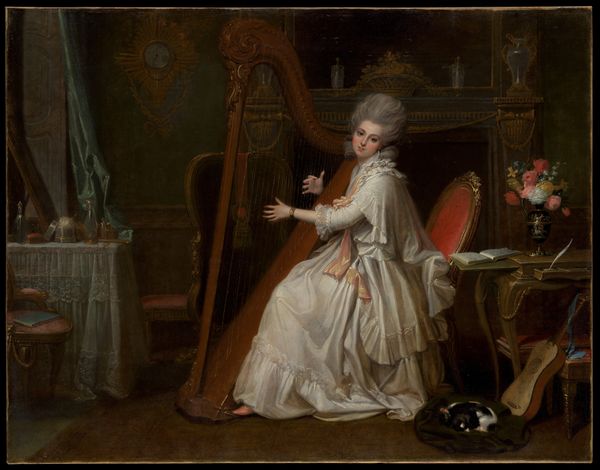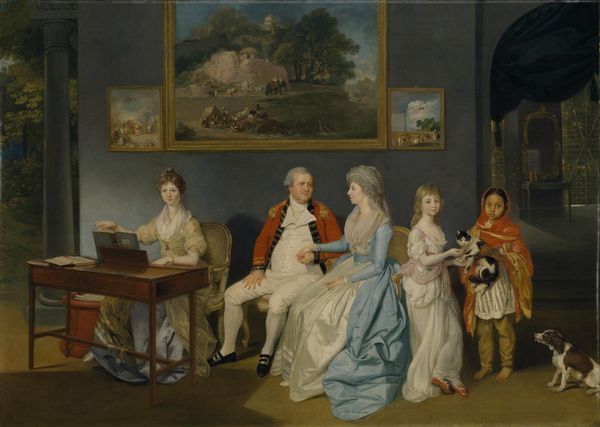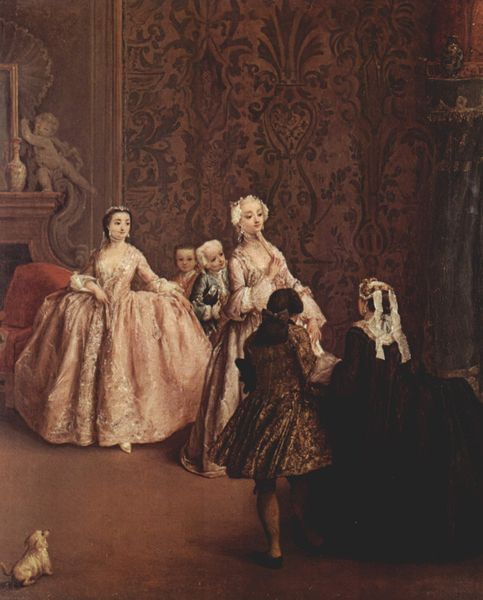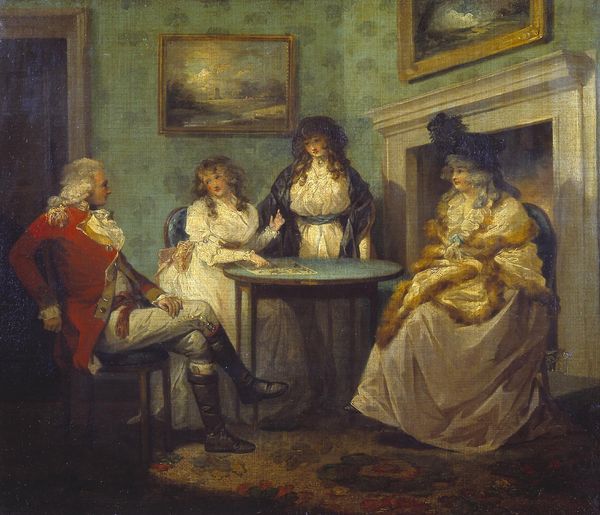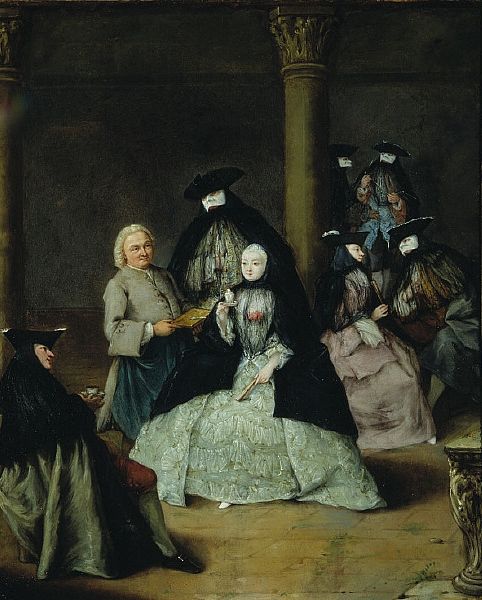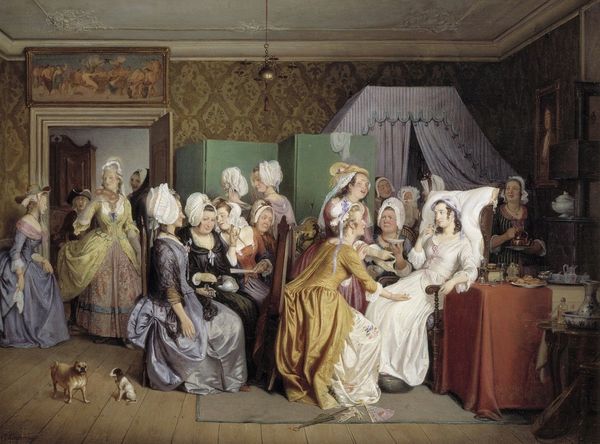
oil-paint
#
portrait
#
gouache
#
venetian-painting
#
oil-paint
#
oil painting
#
group-portraits
#
genre-painting
#
rococo
Dimensions: overall: 49.9 x 61.7 cm (19 5/8 x 24 5/16 in.) framed: 65.4 x 55.9 x 3.8 cm (25 3/4 x 22 x 1 1/2 in.)
Copyright: National Gallery of Art: CC0 1.0
Curator: Pietro Longhi gives us a glimpse into 18th-century Venetian life with "The Game of the Cooking Pot," painted around 1744. The scene depicts a group engaged in what appears to be a parlor game. What’s your immediate impression? Editor: Utterly charming! It's a slice of confection, visually, with that pastel palette. The eye dances around, doesn’t it? The way the figures are arranged, all leading to this oddly placed, very real-looking cooking pot…there's a story brewing. Curator: Absolutely. The choice of oil paint on canvas aligns perfectly with the Rococo emphasis on detailed portrayal and luminous surfaces, serving the wealthy Venetian patrons of the era. Consider the opulent attire. What do you think these textures convey? Editor: Excess! But refined excess. It whispers of silk farms in Lombardy, dressmakers toiling over lace—that frill work would have taken seamstresses days. You can practically hear the rustle of their gowns! It's also such a strangely self-contained scene; are they aware they’re being observed? Curator: Longhi frequently explored social interactions and customs through his work. Here, we see the painting as a vehicle for communicating both the refined leisure and material conditions, if we look to those lush textiles, associated with upper class Venetian society, alongside the playful diversion itself. It almost critiques through display. Editor: I wonder… what are they really like, these people? Are they as fragile as their clothing, as easily toppled as that overturned pot suggests they might be? There's a melancholy lurking beneath all the prettiness, isn’t there? That lonely figure on the left…he seems very removed. Curator: Longhi may have been suggesting, perhaps, that these figures are indeed fragile, because the materials they enjoy rest on systems vulnerable to economic or social turmoil, like Venice during its gradual decline. The overturned pot also signals more than clumsiness; such items carry worth that also might also one day turn over on those who own them. Editor: Hmmm. It adds layers, certainly. Makes the painting more…resonant. I feel less like an observer and more like a fellow player now, caught in the same game of appearances and fleeting pleasures. Curator: Indeed. Reflecting upon Longhi’s careful brushstrokes today offers much more than an insight into material circumstances: it offers a glimpse into human interplay across moments in history.
Comments
No comments
Be the first to comment and join the conversation on the ultimate creative platform.
